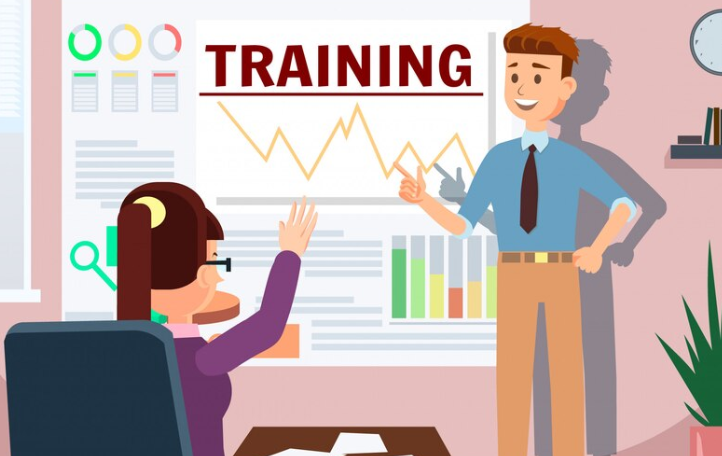In today’s fast-paced and data-driven environment, Judgment and Decision Making (JDM) Training has become a vital component for organizations striving for smarter, more cohesive decision processes. Whether in corporate teams, healthcare environments, or military operations, decision-making no longer rests on the shoulders of a single individual. Instead, groups are called upon to evaluate information, consider alternatives, and arrive at the most effective solutions.
However, collective decision-making is far from simple. It relies heavily on group dynamics, which encompass the psychological and social forces influencing group behavior. Understanding and optimizing these dynamics can greatly enhance the effectiveness of JDM Training, leading to better outcomes, fewer errors, and more cohesive teams. Let’s explore how group dynamics interact with JDM processes and how organizations can leverage this interaction for superior training results.
Understanding Group Dynamics in Decision Making
Group dynamics refer to the patterns of interaction between group members. These dynamics can either foster collaborative decision-making or hinder it through conflict, conformity pressures, or dominance by a few individuals. When applied to JDM Training, these dynamics play a crucial role in determining how well teams assess risks, gather information, and come to a consensus.
Key elements of group dynamics that affect decision-making include:
- Communication patterns
- Leadership styles
- Group cohesion
- Conflict resolution mechanisms
- Power structures
- Diversity of thought
If you’re seeking to incorporate group-based learning in your organizational development, these are critical factors to check over here and address proactively.
Why Group-Based JDM Training Matters
Research shows that decisions made by diverse, well-functioning teams are often more accurate and creative than those made by individuals. Group-based JDM Training simulates real-world scenarios where teams are required to:
- Analyze complex data
- Weigh conflicting goals
- Manage time pressures
- Adapt to dynamic environments
Such training not only enhances individual cognitive skills but also builds collective intelligence, the shared capacity of a team to perform tasks and solve problems effectively. This is especially beneficial in high-stakes environments like emergency response, air traffic control, and strategic business planning, where the cost of poor decisions can be substantial.
Challenges in Group JDM Training
Despite its benefits, group decision-making is not without its challenges. Some common pitfalls include:
1. Groupthink
This occurs when the desire for harmony or conformity results in irrational or dysfunctional decisions. Teams might suppress dissenting views, ignore alternatives, or fail to critically analyze data.
2. Social Loafing
Not all members may contribute equally, especially in larger groups. Some individuals may feel less accountable and put in minimal effort, undermining the decision quality.
3. Dominant Voices
When one or two members dominate discussions, it can limit the group’s ability to consider multiple viewpoints and stifle innovation.
4. Conflict and Miscommunication
Without proper facilitation, conflicts may escalate or critical messages may be misunderstood, derailing the decision-making process.
Understanding these challenges helps trainers and leaders find out more about potential vulnerabilities in team structures and address them effectively.
Best Practices to Enhance Group JDM Training
To unlock the full potential of group decision-making, organizations should adopt the following strategies:
1. Structured Decision-Making Models
Incorporate structured frameworks like the Delphi method, nominal group technique, or decision matrices into training. These models help reduce bias and ensure a methodical approach to group judgment.
2. Role Clarity and Accountability
Define clear roles for each group member during training exercises. This increases engagement, distributes responsibility evenly, and reduces social loafing.
3. Promote Psychological Safety
Creating a safe space where team members feel comfortable voicing dissent or admitting mistakes fosters honest dialogue and learning from failure.
4. Diversity and Inclusion
Encourage a diverse group of participants in training sessions. Diversity in background, expertise, and thinking styles improves problem-solving capacity and guards against groupthink.
5. Simulate Realistic Scenarios
Training should include complex, dynamic simulations that mirror real-world decision environments. This experiential learning approach prepares teams to function effectively under pressure.
6. Feedback Loops
Incorporate debriefing sessions where teams can reflect on their decision-making process, receive feedback, and identify areas for improvement. This solidifies learning and continuous improvement.
If you’re unsure where to begin, contact us to learn how customized training modules can address your organization’s specific needs.
Technology’s Role in Group JDM Training
Modern technology has expanded the toolkit available for effective JDM Training. Platforms that enable collaborative virtual simulations, decision tracking, and performance analytics can significantly enhance learning outcomes. These tools allow instructors to analyze how groups function in real-time and adjust training accordingly.
Moreover, AI-based decision support systems can be integrated into training scenarios to challenge participants, highlight cognitive biases, and simulate high-stakes environments.
Case Example: Group JDM in Action
Consider a hospital setting where a multidisciplinary team must decide on a treatment plan for a critically ill patient. Physicians, nurses, and specialists must work together, weigh options, and make timely decisions. Through JDM Training rooted in group dynamics, these teams can learn to communicate effectively, manage stress, and align on goals—ultimately improving patient outcomes.
In this scenario, training sessions that include role-playing, ethical dilemmas, and real-time feedback loops prove invaluable. Over time, teams become more adept at making sound, rapid decisions under pressure.
Conclusion
Group dynamics and JDM Training are deeply intertwined. Effective collective decision-making relies on more than just individual knowledge—it requires teams that can collaborate, communicate, and navigate conflict productively. By investing in group-based training models that consider both psychological and structural elements of decision-making, organizations stand to gain more agile, cohesive, and capable teams.
To maximize your organization’s potential, it’s essential to go beyond traditional training methods and embrace a group-dynamic approach. Want to implement this in your own organization? Find out more about how we can help tailor solutions to your team’s unique decision-making challenges.












